An unlikely friendship started between a baby zebra and a baby rhino at Care for Wild Rhino Sanctuary
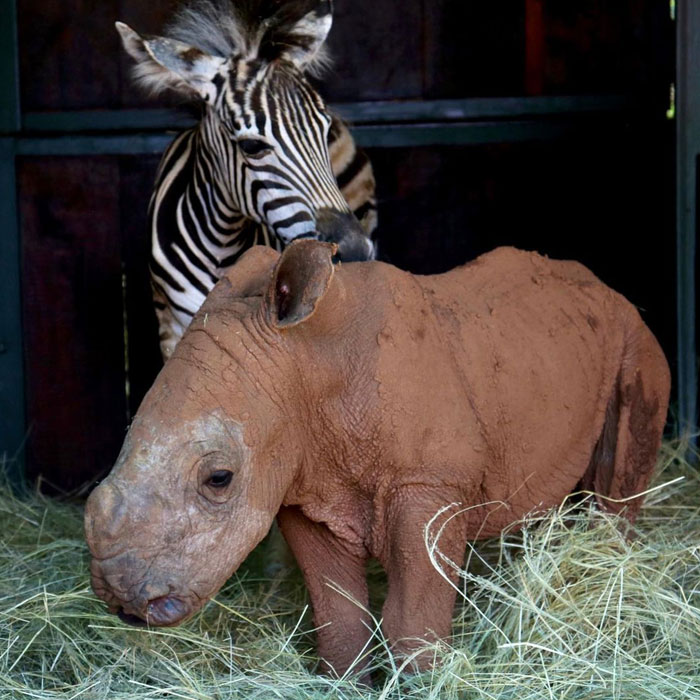
A baby rhino and a baby zebra were both found orphaned in the wild, becoming the best of friends in the sanctuary which took them in.
Care for Wild is the largest orphan rhino sanctuary in the world and they aim to rescue, rehabilitate, release and protect the animals that come into their care.
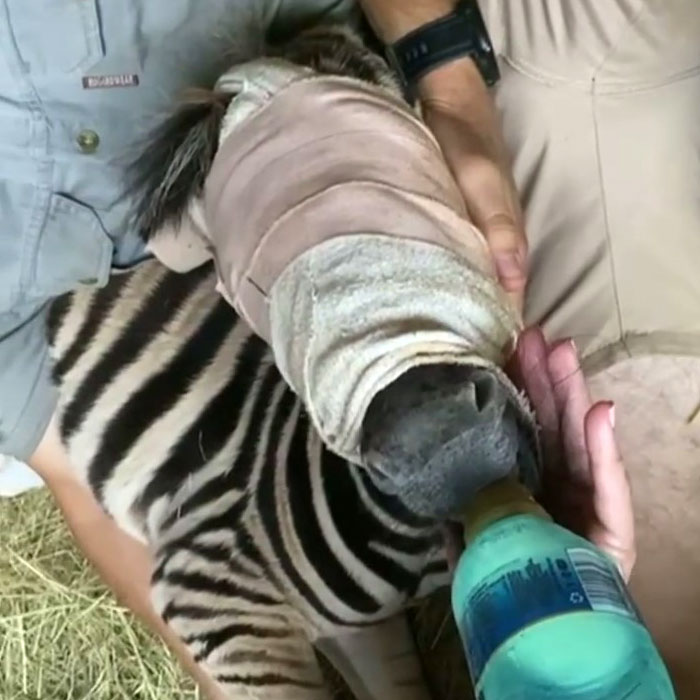
They first found the zebra in South Africa’s Kruger National Park, one of Africa’s largest reserves, back in November 2021. In an Instagram post, the sanctuary wrote that they’d “received a new baby but a little smaller and stripier than our normal patients.”
After the storms and heavy rains, rangers on patrol in the reserve came across a very young zebra foal laying abandoned and motionless in the wet grass. Estimated to be only a few days old, she was incredibly weak and found it difficult to stand, thus she was admitted to the sanctuary’s Intensive Care Unit (ICU).
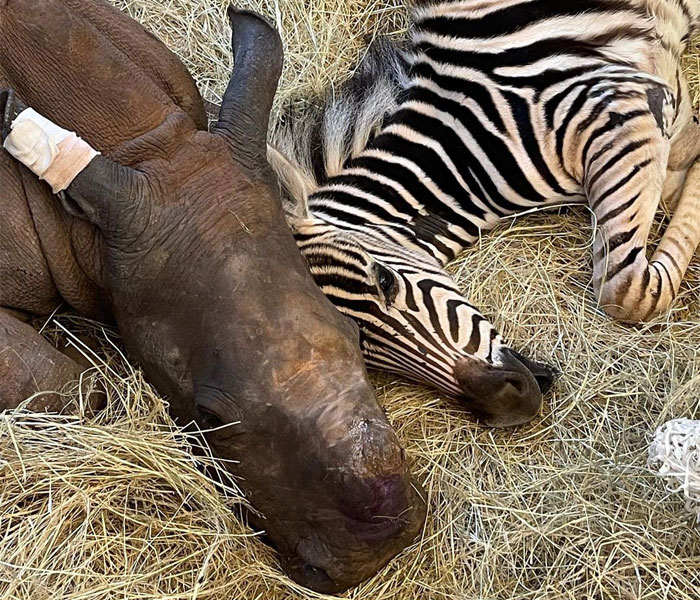
They named the young zebra Modjadji, meaning ‘rain queen’, a beautiful immortalization of her past.
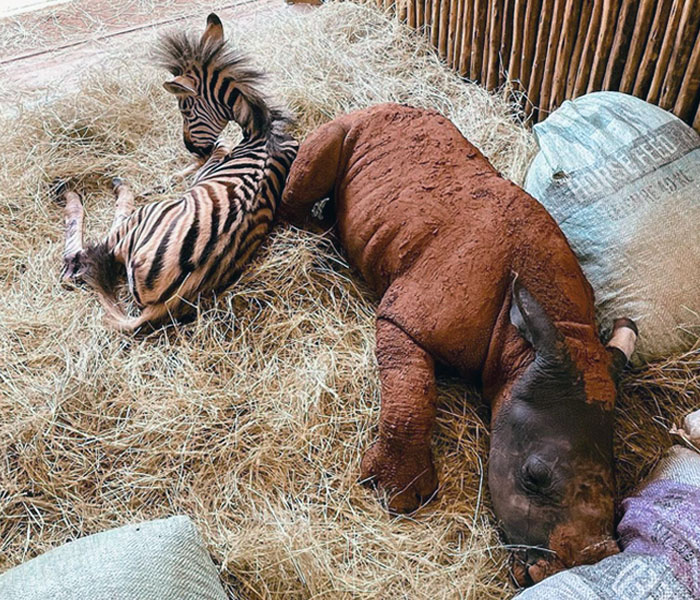
The poor animal had a lot of ailments to battle but the workers kept a close eye on her, doing what they could to better the state of the zebra.
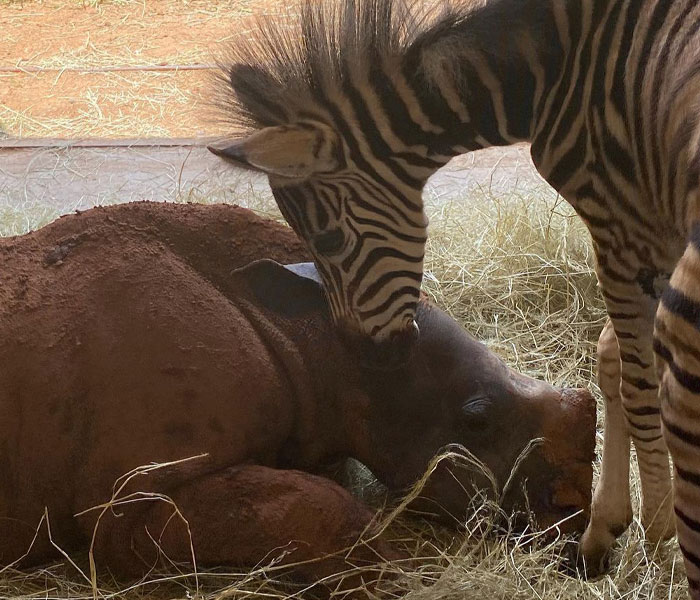
A short while after Modjadji was found, the workers came across a baby rhino, so young it still had the umbilical cord attached
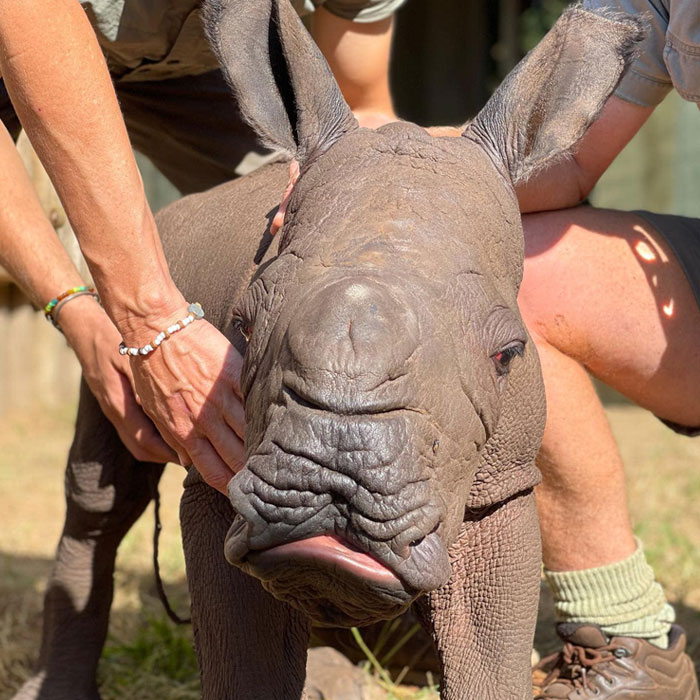
Less than a month later, a baby rhino was found. Alone and fighting for its life, its still-attached umbilical cord signaled that it must have been less than a day old.
Sanctuary workers wasted no time saving the rhino, rushing it straight to the ICU. The calf was incredibly weak, always having a caregiver by her side to monitor her health, help maintain her temperature and provide food.
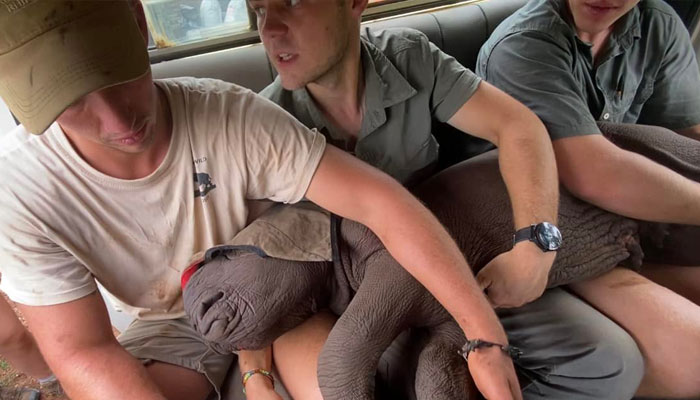
She was named Daisy and she was in a very bad condition, requiring constant observation and care. It wasn’t clear whether she’d make it
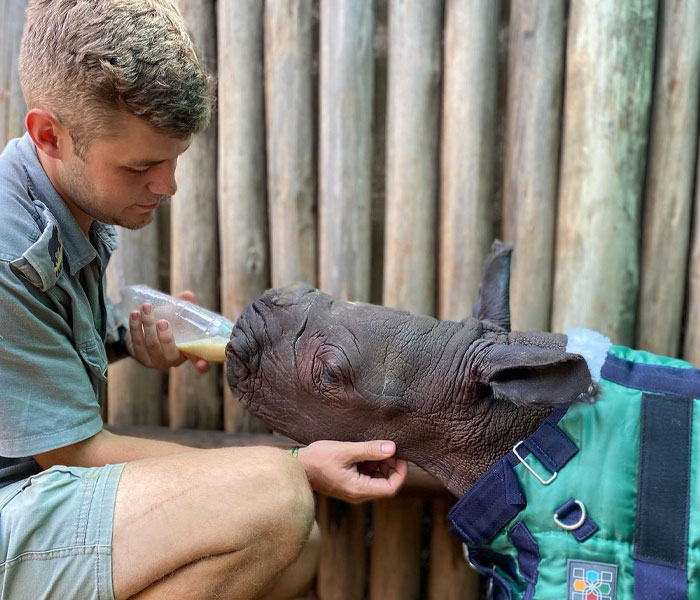
The baby rhino was named Daisy. The sanctuary kept posting updates on its journey, saying that “this tiny, miniature rhino instantly climbed into our hearts. With her oversized feet, droopy lips and hairy ears, she looked prehistoric and yet she was so unbelievably vulnerable.”
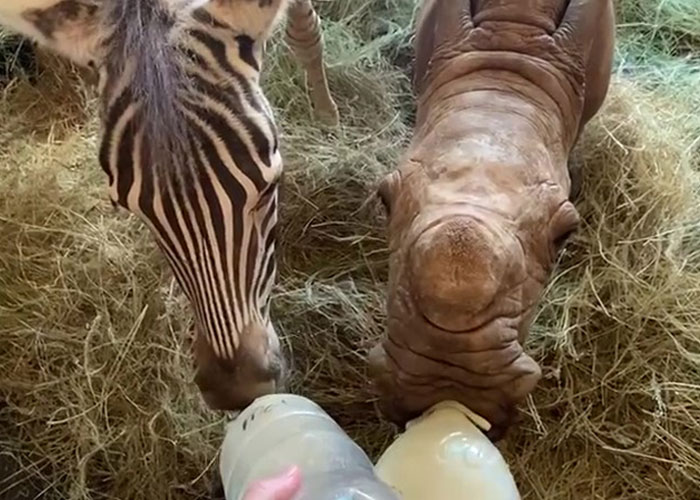
After Aquazi left the ICU, Modjadji turned to befriending Daisy, the two quickly becoming inseparable friends. The zebra offered the rhino a lot of comfort, the sanctuary noting the gentleness and care Modjadji exhibited.
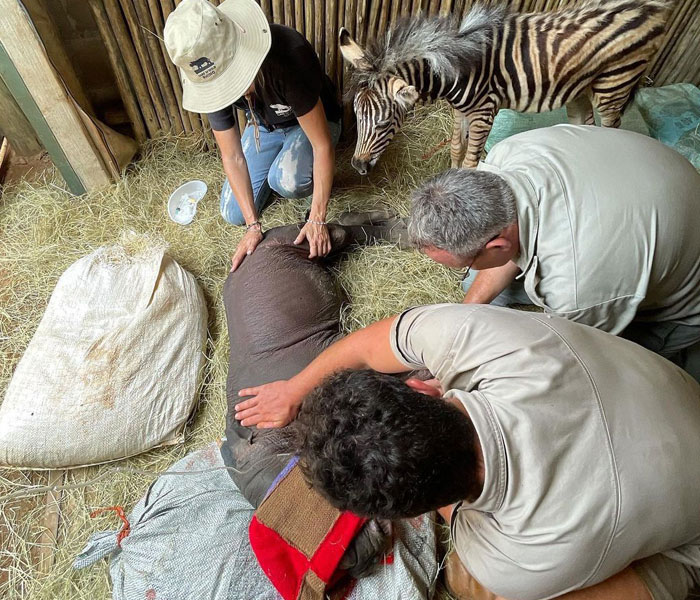
She celebrated her first month and, more recently, her fourth month, steadily growing into a beautiful rhino
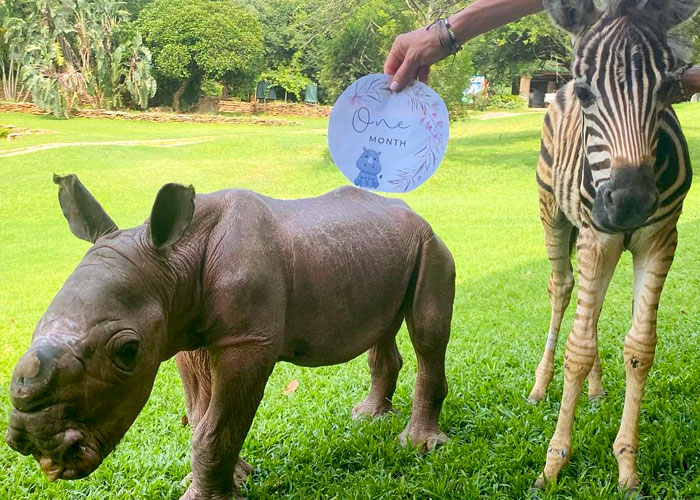
Their friendship cannot be understated, each baby offering the other a much-needed friend after what they’d gone through
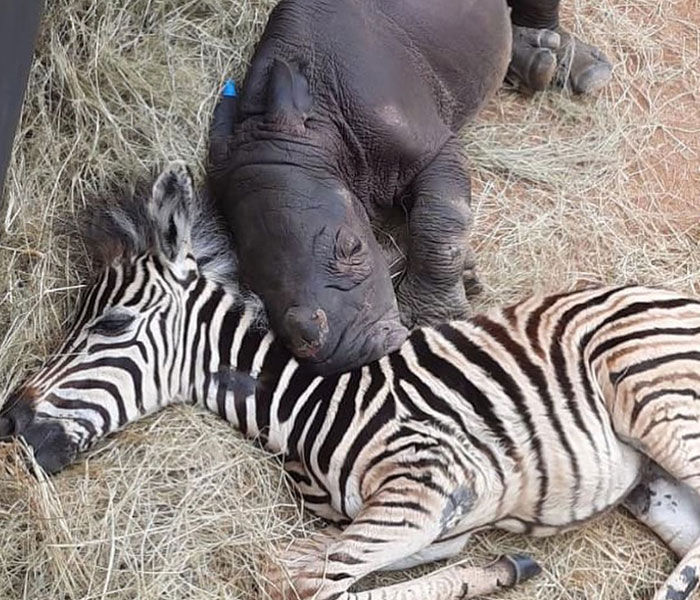
The pair had become quite playful and mischievous, finding the milk preparation station and giving a worker some grief
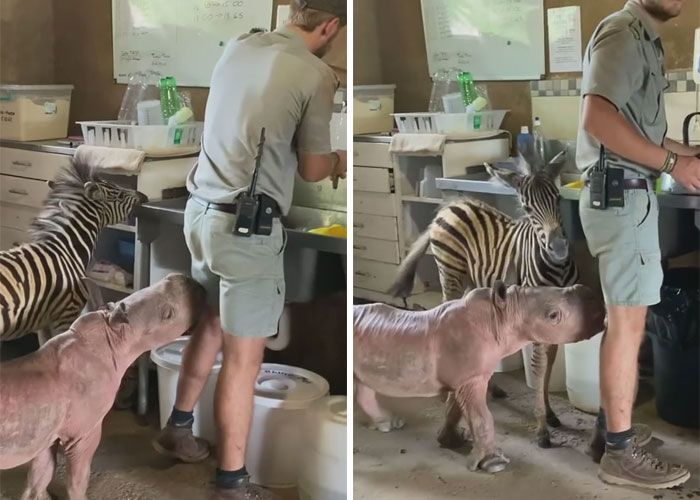
The pair had become quite playful and mischievous, Modjadji trying to teach Daisy how to graze or showing her where the milk is prepared.
Regardless of their little shenanigans, their caregivers rejoice in their friendship, saying that “it’s hard to believe how hard we fought for their lives when now you see them strong, cheeky and up to all kinds of mischief!”
Modjadji also tried teaching Daisy how to graze the green, delicious grass, but Daisy still has a ways to go in mastering the art
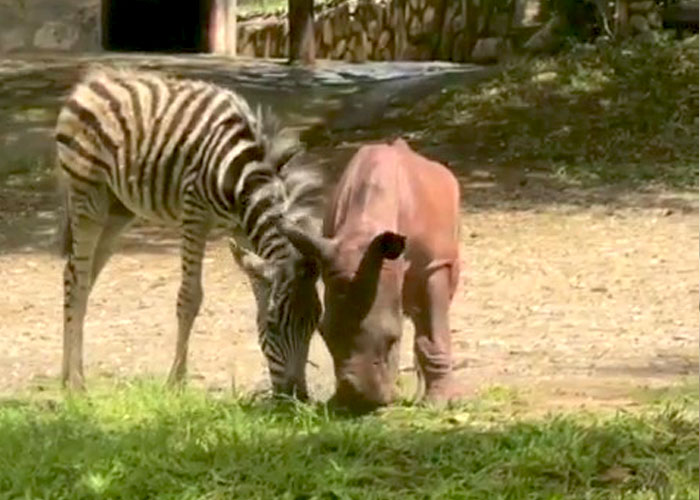
There will come a time when the zebra and the rhino are old enough to be released into the wild, but that day is still very far away
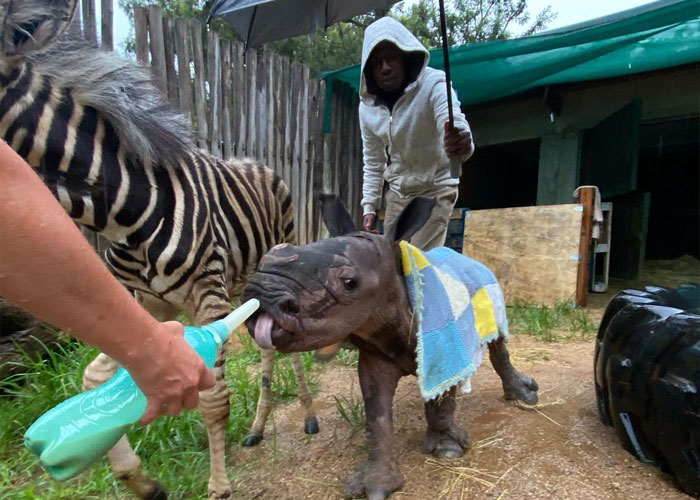
At the time, Daisy wasn’t able to play or interact with other rhinos too much, because she was simply too weak for their boisterous and rough behavior.
But as she continues to grow, the sanctuary believes that she will eventually join the other orphaned rhinos and Modjadji will return to a herd of zebras.
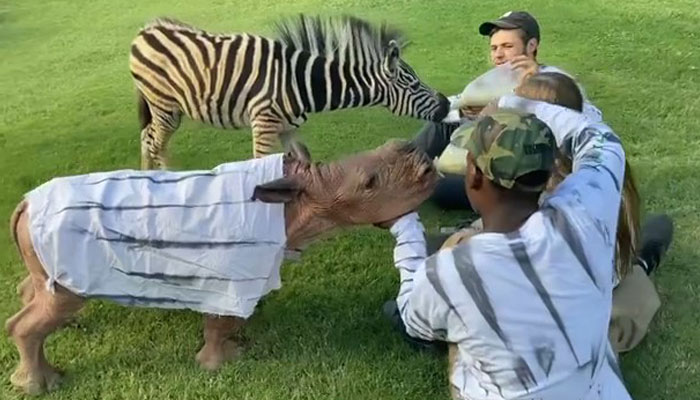
However, one cannot look past the reasons for their stay at the sanctuary and one of them is poaching – the illegal killing of animals
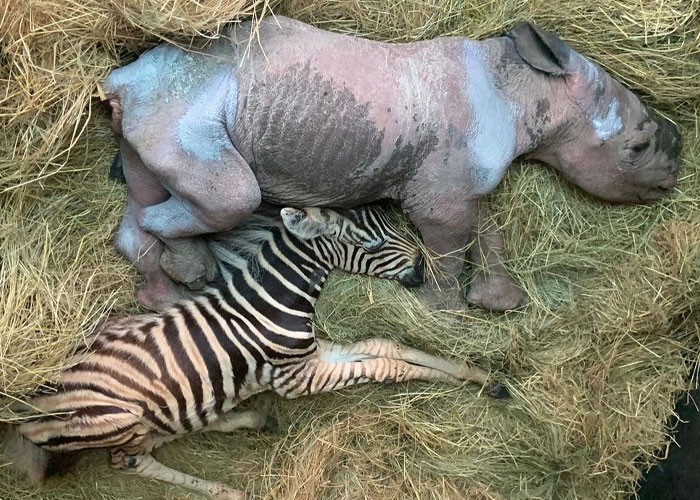
However, I’d like to address the elephant in the room, and that is the topic of poaching. Poaching is the illegal killing of animals that are claimed to be endangered or are prohibited from being hunted otherwise. It happens most often because of the valuable elements animals possess, such as killing elephants for ivory, tigers for their skins and bones, and rhinos for their horns.
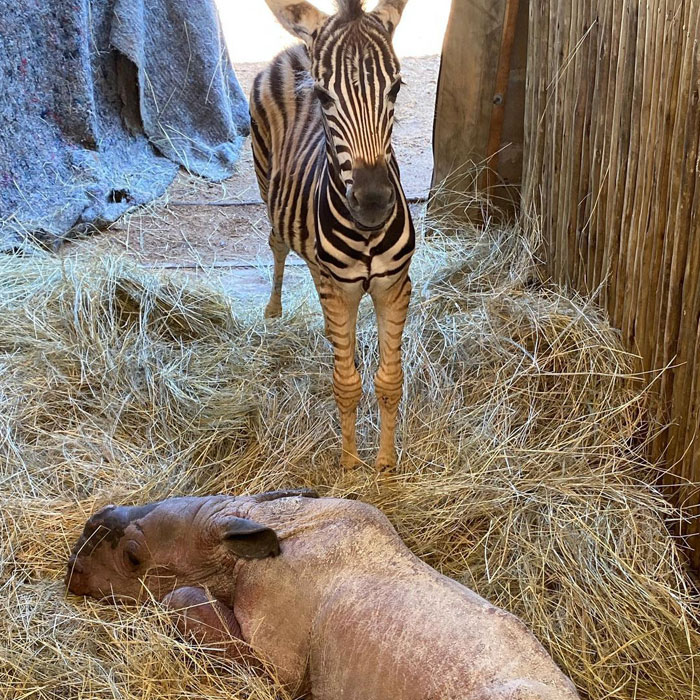
The demand for rhino horns is both vain and misinformed, coming mostly from Asian countries, such as China and Vietnam.
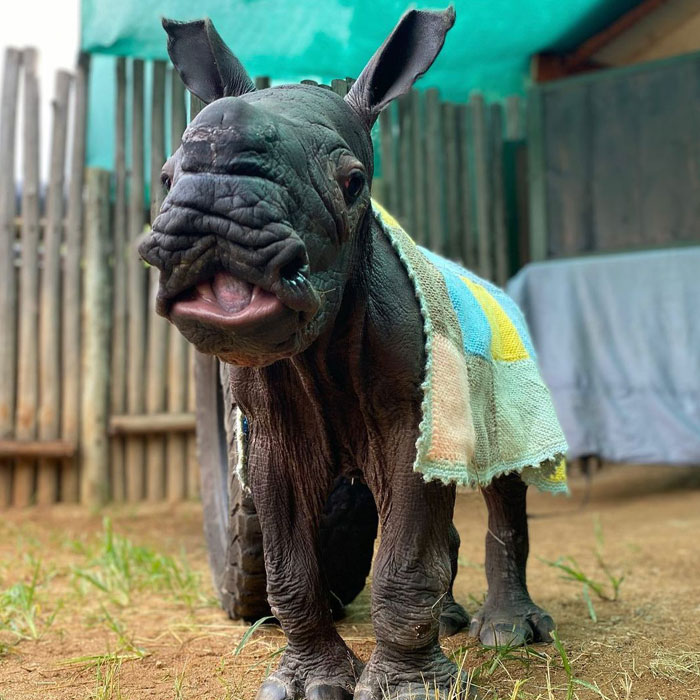
WWF has stated that poaching gangs use increasingly sophisticated methods, including helicopters and night vision equipment to track rhinos, and veterinary drugs to knock them out. This means countries and conservationists need to match this level of technology to be able to tackle the problem, alongside working to reduce demand.
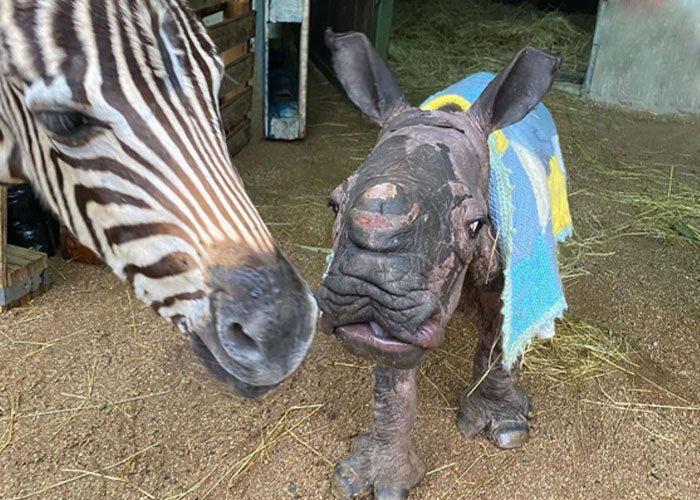
We can only be grateful for the sanctuaries that are protecting innocent animals against an untimely demise and we hope to reach a day where poaching of all animals for outdated or useless reasons is a thing of the past.
For now, we continue to follow Modjadji’s and Daisy’s lives, enjoying their little adventures and the joy they bring to everyone around them.
Let us know what you thought of this story and have a great day!